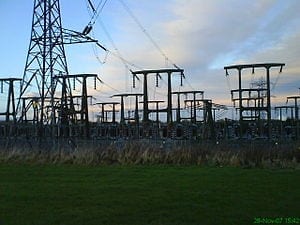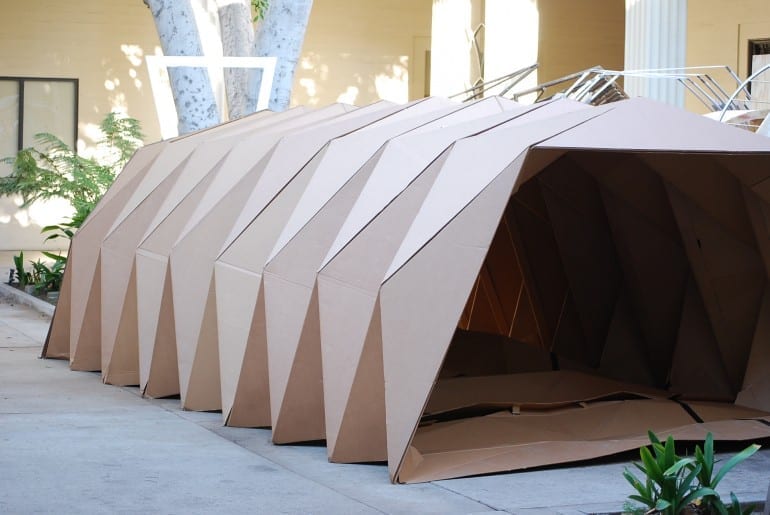
Predicting the future is a crapshoot.
When we were writing this book and interviewing people about 3D printing, we discovered that a few underlying “rules” kept coming up. People from a broad and diverse array of industries and backgrounds and levels of expertise described similar ways that 3D printing helped them get past key cost, time and complexity barriers.
We have summarized what we learned. Here are ten principles of 3D printing we hope will help people and businesses take full advantage of 3D printing technologies.
Principle one: Manufacturing complexity is free. In traditional manufacturing, the more complicated an object’s shape, the more it costs to make. On a 3D printer, complexity costs the same as simplicity. Fabricating an ornate and complicated shape does not require more time, skill, or cost than printing a simple block. Free complexity will disrupt traditional pricing models and change how we calculate the cost of manufacturing things.
Principle two: Variety is free. A single 3D printer can make many shapes. Like a human artisan, a 3D printer can fabricate a different shape each time. Traditional manufacturing machines are much less versatile and can only make things in a limited spectrum of shapes. 3D printing removes the over- head costs associated with re-training human machinists or re-tooling factory machines. A single 3D printer needs only a different digital blueprint and a fresh batch of raw material.
Principle three: No assembly required. 3D printing forms interlocked parts. Mass manufacturing is built on the backbone of the assembly line. In modern factories, machines make identical objects that are later assembled by robots or human workers, sometimes continents away. The more parts a product contains, the longer it takes to assemble and the more expensive it becomes to make. By making objects in layers, a 3D printer could print a door and attached interlocking hinges at the same time, no assembly required. Less assembly will shorten supply chains, saving money on labor and transportation; shorter supply chains will be less polluting.
Principle four: Zero lead time. A 3D printer can print on demand when an object is needed. The capacity for on-the-spot manufacturing reduces the need for companies to stockpile physical inventory. New types of business services become possible as 3D printers enable a business to make specialty — or custom — objects on demand in response to customer orders. Zero-lead-time manufacturing could minimize the cost of long-distance shipping if printed goods are made when they are needed and near where they are needed.
The Latest Bing News on:
3D Printing
- ‘Faster, better, cheaper’ homes: Venture seeks to bring 3D printing construction to Guamon April 26, 2024 at 2:53 pm
An affordable concrete home, with walls, plumbing and electrical fixtures built and installed in one day’s time?
- World's biggest 3D printer whirs into actionon April 26, 2024 at 7:09 am
A giant 3D printer, which is big enough to make a house, has been unveiled at the University of Maine. The university says it has beaten its own record for the world's largest polymer 3D printer - with the new printer four times bigger than the previous machine.
- UNF, Mayo Clinic partner on 3D anatomy printing courseon April 25, 2024 at 11:45 am
The course gives biology and engineering students hands-on experience in an emerging field that will help improve patient outcomes.
- World's biggest 3D printer unveiled in Maine may one day create entire neighborhoodson April 24, 2024 at 9:14 am
ORONO, Maine - The world's largest 3D printer has created a house that can cut construction time and labor. An even larger printer unveiled on Tuesday may one day create entire neighborhoods. The machine revealed Tuesday at the University of Maine is four ...
- Could Your Next Chair Be 3D Printed? Exploring the Viability of 3D Printing in Furniture Productionon April 24, 2024 at 8:55 am
Desktop 3D printers have undergone a revolution in the past year with the introduction of very high speed devices, in some cases able to print at speeds up to 10X of the earlier devices. This same speed-up tech can now be ported to larger format FFF 3D printers, and that should dramatically cut down on the cost to produce parts.
The Latest Google Headlines on:
3D Printing
[google_news title=”” keyword=”3D Printing” num_posts=”10″ blurb_length=”0″ show_thumb=”left”] [/vc_column_text]The Latest Bing News on:
Future of 3D printing
- UMaine’s novel polymer 3D printer surpasses former Guinness World Recordon April 26, 2024 at 6:03 pm
Four times larger than its predecessor, FoF 1.0 offers new opportunities in composite materials, including development of recycled and bio-based materials.
- World's largest 3D printer can print a house in under 80 hourson April 26, 2024 at 10:56 am
The University of Maine just revealed the world’s largest 3D printer, and it is an absolute beast. The printer, which the university named Factory of … The post World’s largest 3D printer can print a ...
- Makers of the world’s largest 3D printer just beat their own recordon April 26, 2024 at 10:43 am
After a five-year reign, the world’s largest 3D printer located at the University of Maine has been usurped—by a newer, larger 3D printer developed at the same school.
- This is the world's largest 3D printer: The University of Maine breaks its own recordon April 26, 2024 at 8:42 am
Forward-looking: The University of Maine has broken its own 2019 Guinness World Record with a next-gen polymer 3D printer that is four times the size of its predecessor. Dubbed Factory of the Future 1 ...
- The world’s largest 3D printer is at a university in Maine. It just unveiled an even bigger oneon April 26, 2024 at 8:33 am
The university that boasts the world’s largest 3D printer developed one even bigger. A printer unveiled Tuesday at the University of Maine is four times larger than the current one and is capable of ...
- World's biggest 3D printer whirs into actionon April 26, 2024 at 7:09 am
A giant 3D printer, which is big enough to make a house, has been unveiled at the University of Maine. The university says it has beaten its own record for the world's largest polymer 3D printer - ...
- The world’s biggest 3D printer can a make a house in under 80 hourson April 25, 2024 at 8:52 am
The University of Maine just unveiled the world’s largest polymer 3D printer. The new printer, named Factory of the Future 1.0 (FoF 1.0), can print objects as large as 96 feet long by 32 feet wide by ...
- World's biggest 3D printer unveiled in Maine may one day create entire neighborhoodson April 24, 2024 at 9:14 am
As for the original 3D printer, it isn't going away. The two printers can be used in concert to streamline manufacturing by working on the same project — or even part if necessary — and there will be ...
- World’s largest 3D printer can build a small house in 80 hourson April 24, 2024 at 2:54 am
D printer is here to help its predecessor reach this goal of providing more for less. The FoF 1.0 3D printer will build ...
- University of Maine unveils larger, faster 3D printeron April 23, 2024 at 7:37 pm
The University of Maine today unveiled a new large-scale 3D printer, and university officials said it will allow researchers to create bigger projects in less time. The new printer, called Factory of ...
The Latest Google Headlines on:
Future of 3D printing
[google_news title=”” keyword=”future of 3D printing” num_posts=”10″ blurb_length=”0″ show_thumb=”left”]










